Best Perennials to Plant Around Your Mailbox
Your mailbox may seem like a small part of your home’s exterior, but it offers a prime opportunity to boost curb appeal with a burst of color and greenery. A thoughtfully designed flower bed around the base of your mailbox can transform this everyday utility into a charming focal point that welcomes visitors and passersby alike.
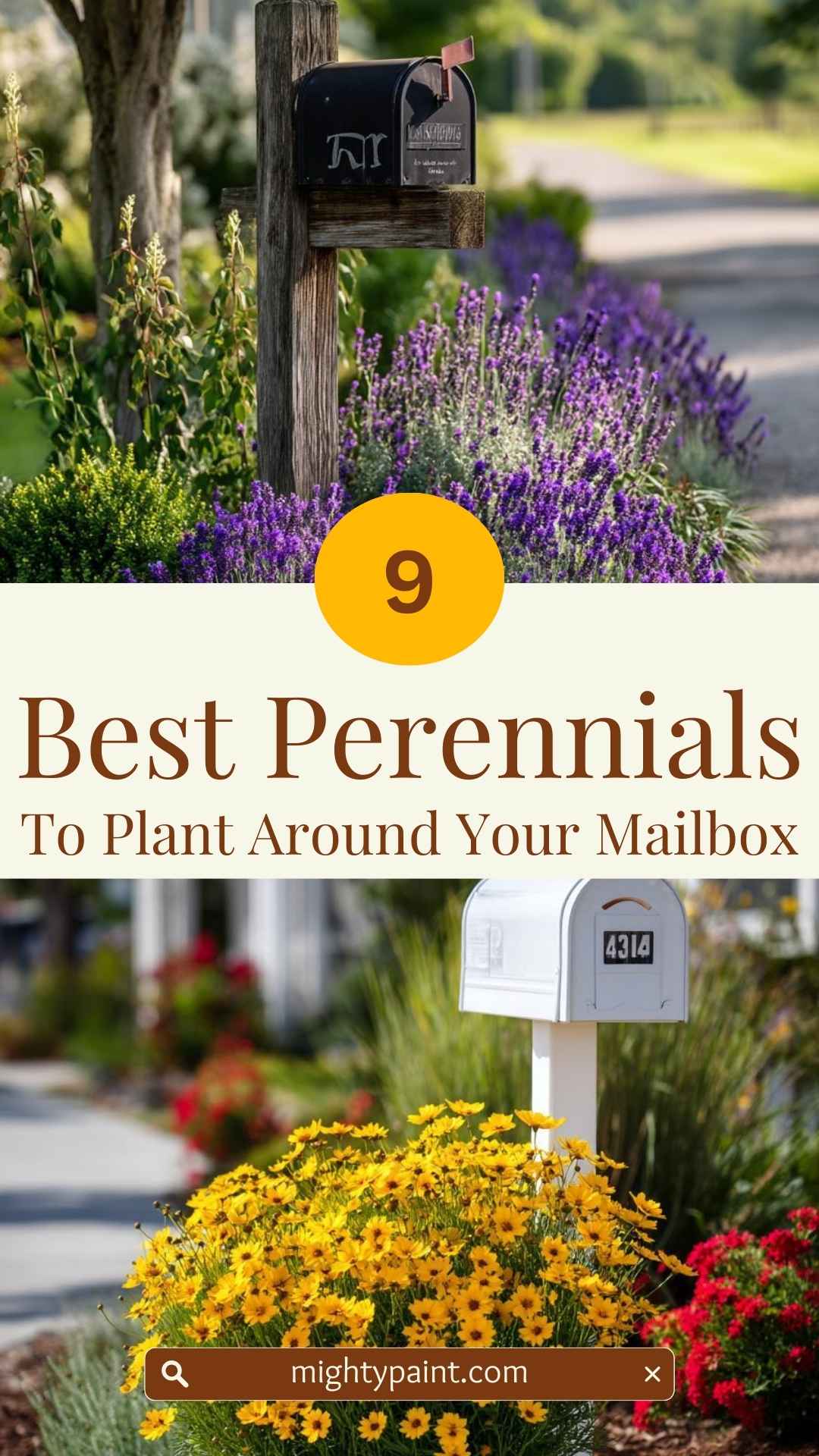
Perennials are especially ideal for mailbox landscaping—they come back year after year, require less maintenance than annuals, and can handle the heat and exposure typical of roadside spots. Whether you’re looking for bold colors, drought tolerance, or pollinator-friendly plants, the right mix of perennials can add beauty and resilience to your front yard.
In this article, we’ll highlight nine of the best perennials for planting around your mailbox. Each one has been selected for its aesthetic appeal, hardiness, and adaptability to sunny, exposed locations. Let these ideas inspire a beautiful new look for the space that greets everyone first—your mailbox.
1. Lavender (Lavandula spp.)
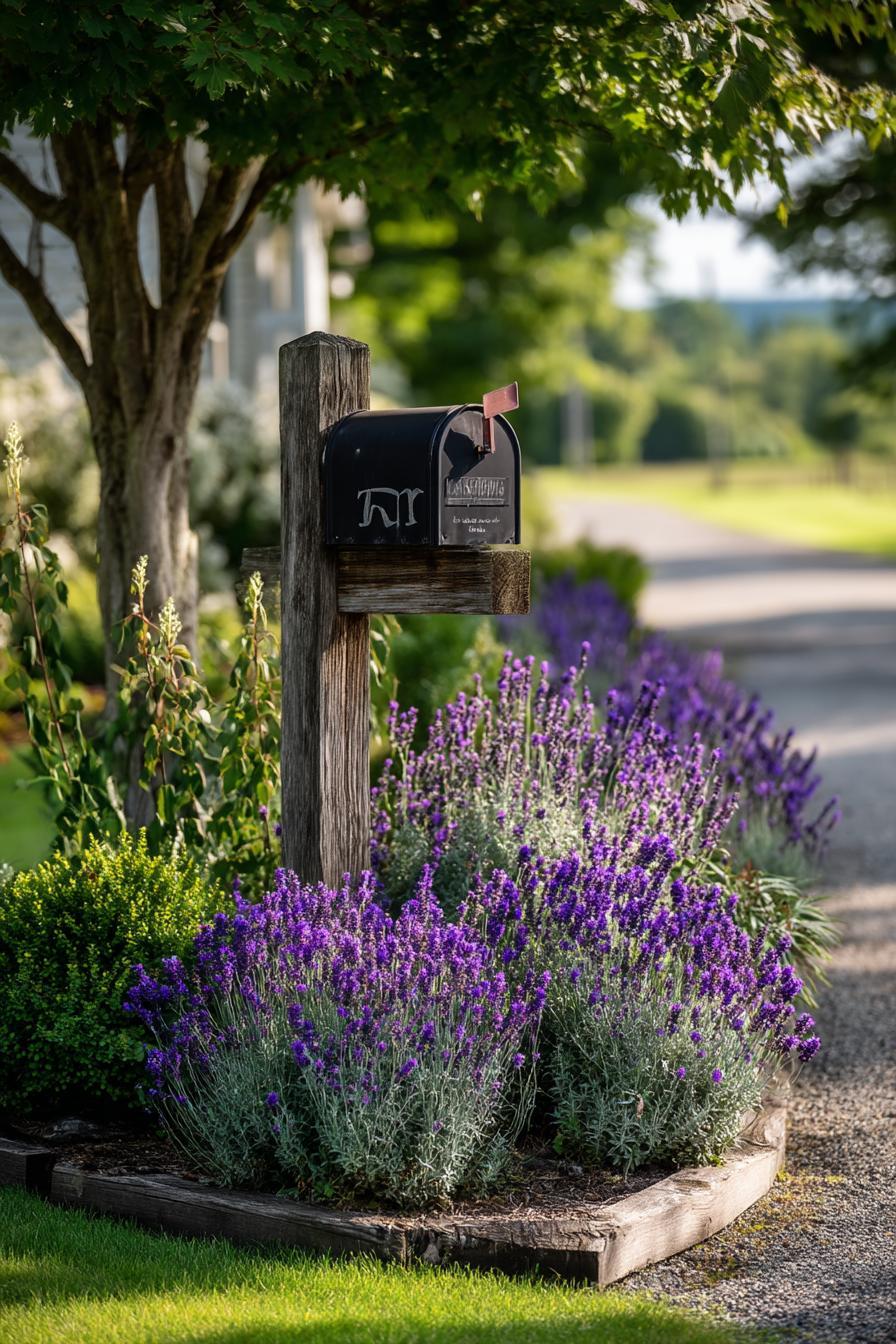
Lavender is a perennial favorite when it comes to mailbox landscaping—and for good reason. Its fragrant purple spikes, silvery-green foliage, and compact form make it both visually appealing and highly functional. Lavender thrives in full sun and well-drained soil, both of which are common conditions around most mailboxes. It’s also drought-tolerant, which means less maintenance during dry spells.
In addition to its beauty, lavender attracts pollinators like bees and butterflies, supporting local ecosystems. Its scent acts as a natural deterrent to pests like deer and rabbits, making it a smart choice for exposed areas.
Plant lavender in small clusters or rows at the front or middle of your mailbox bed. It pairs beautifully with brighter-colored companions like yellow coreopsis or white daisies. Be sure to prune it back after the blooms fade to maintain its shape and encourage new growth the following season.
2. Black-Eyed Susan (Rudbeckia hirta)
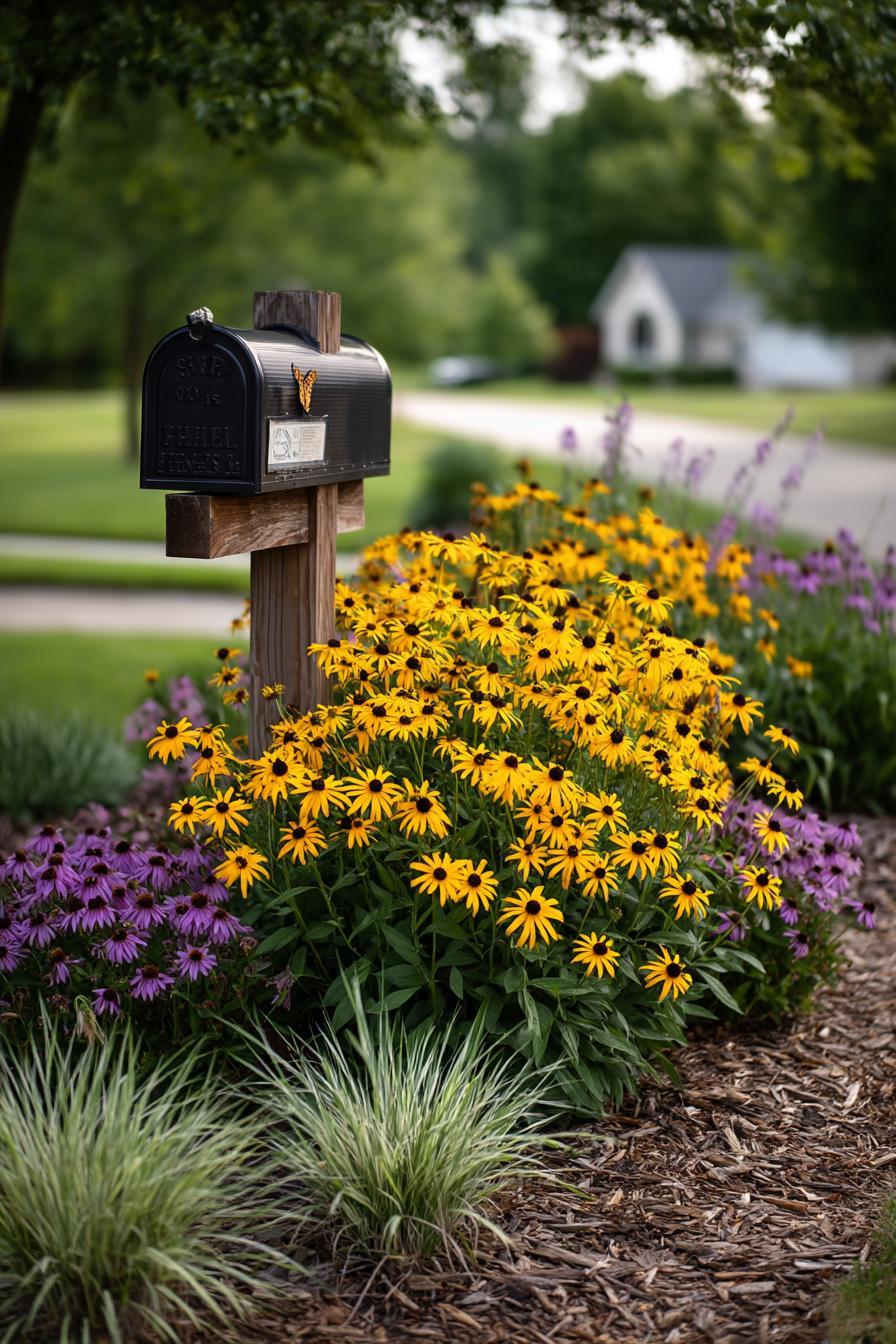
Black-Eyed Susans are cheerful and robust, adding bright golden-yellow blooms to the area around your mailbox from midsummer through early fall. Their daisy-like flowers with dark central cones bring a burst of color that’s visible even from the street, drawing attention and adding personality to your front yard.
These perennials are incredibly tough—drought-resistant, tolerant of poor soil, and capable of thriving in full sun. Their upright growth habit makes them a great mid- to back-layer plant in a tiered flower bed design. They can also be planted en masse for a bold, dramatic effect.
Deadheading spent flowers will encourage longer blooming, and they self-seed easily, helping them spread over time. Paired with ornamental grasses or purple coneflowers, Black-Eyed Susans offer a classic, pollinator-friendly, and eye-catching addition to any mailbox garden.
3. Daylilies (Hemerocallis spp.)
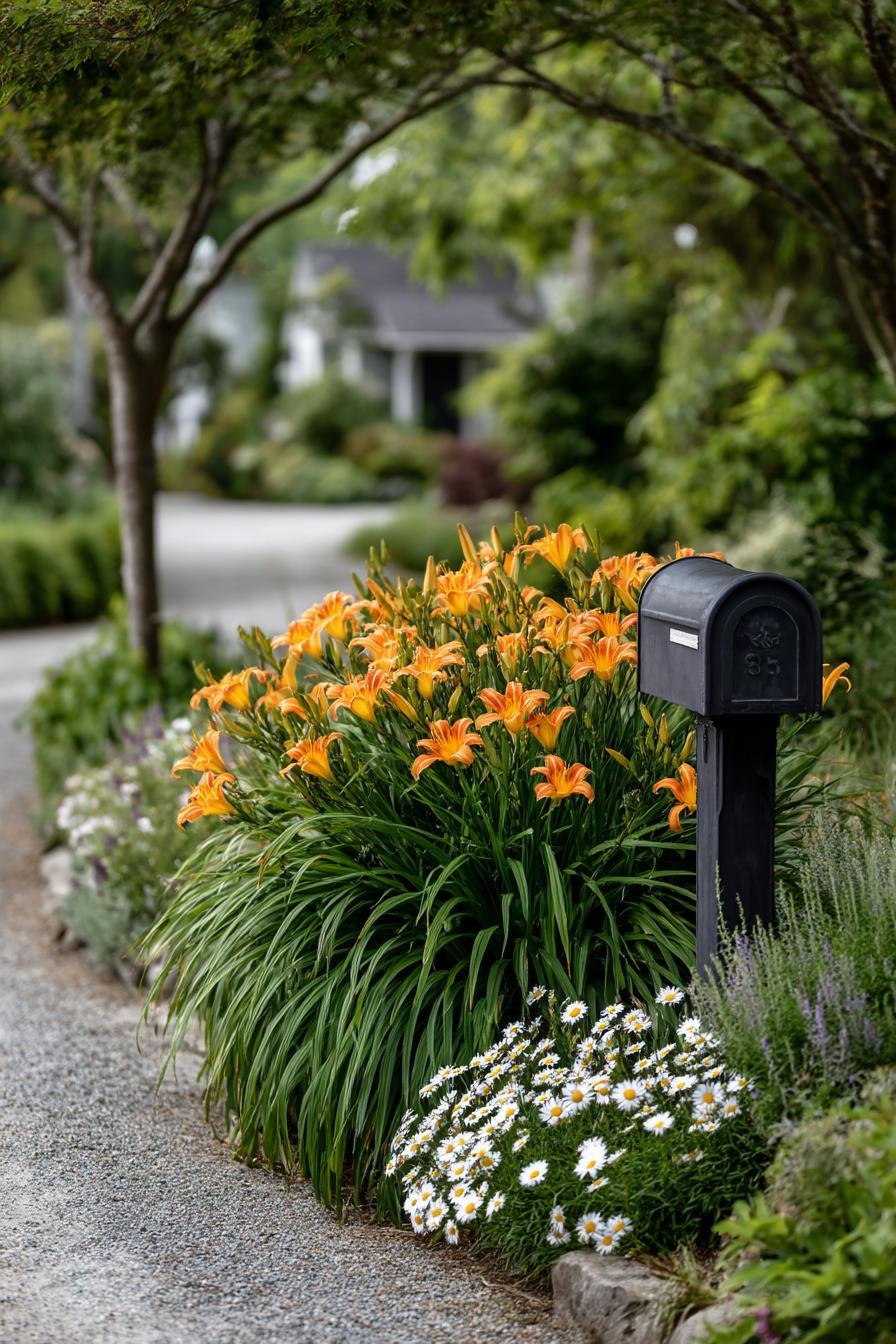
Daylilies are one of the most versatile and forgiving perennials you can plant around your mailbox. Their arching, grass-like foliage and trumpet-shaped blooms come in an array of vibrant colors including yellow, orange, pink, and red. Though each flower lasts only a day, the plants produce multiple blooms throughout the season for a continuous display.
These hardy perennials thrive in sun to partial shade and tolerate a wide range of soil types. They are drought-resistant once established and require very little maintenance. Every few years, they benefit from being divided, which also helps propagate new plants for other areas of your yard.
Use daylilies as a central element in your mailbox bed or plant them in waves alongside shorter bloomers like lavender or sedum. Their lush foliage adds texture even when not in bloom, making them a foundational choice for any front-yard planting scheme.
4. Coneflower (Echinacea purpurea)
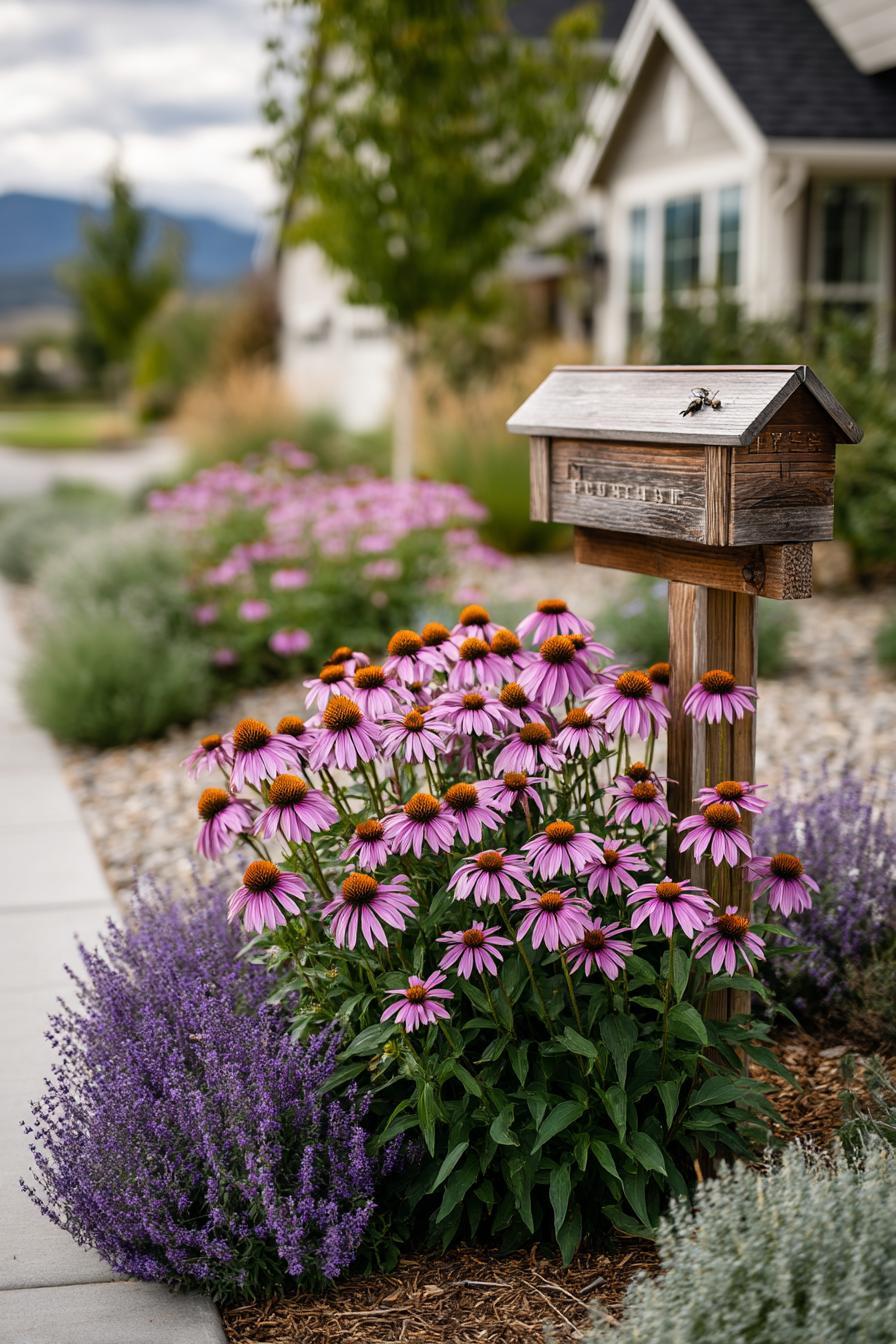
Coneflowers are a classic addition to any perennial garden, and they shine especially well around mailboxes. Their upright stems topped with daisy-like, purple-pink petals and prominent spiky centers add height and drama to your floral display. These blooms are not just beautiful—they’re tough, heat-tolerant, and beloved by butterflies, bees, and even songbirds.
Perfect for full-sun spots, coneflowers bloom from mid-summer to early fall and require minimal care. Once established, they’re drought-resistant and can handle a variety of soil conditions. They also have a self-seeding habit, meaning they can naturally expand over time and provide continuous coverage around your mailbox.
Use coneflowers as a vertical anchor in your planting scheme. They pair well with lower-growing perennials like lavender or sedum, and their vibrant blooms offer a delightful contrast to grasses or neutral green foliage. Deadheading can prolong blooming, but even spent flowers add winter interest and attract birds.
5. Russian Sage (Perovskia atriplicifolia)
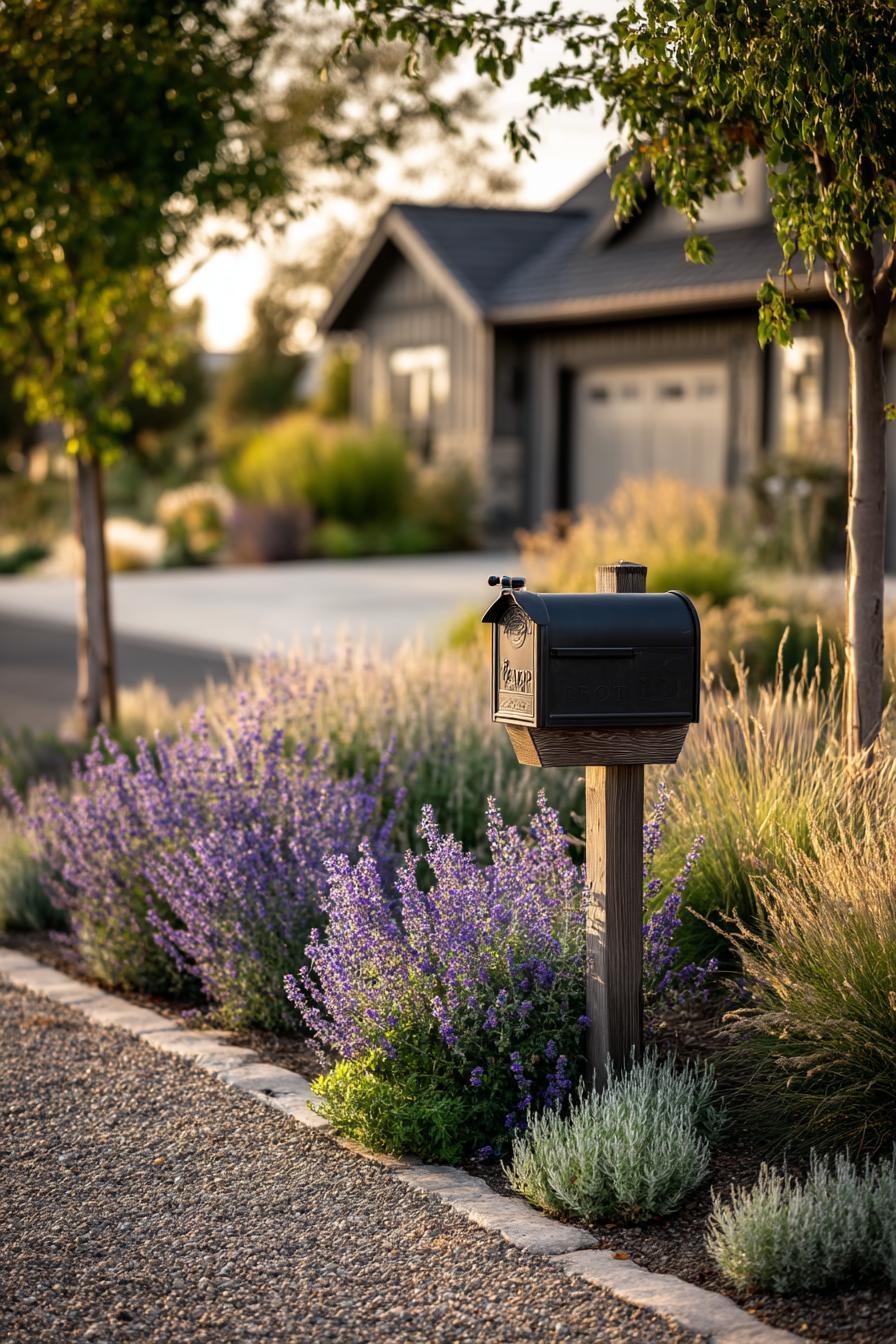
For a light, airy touch around your mailbox, Russian Sage is a standout choice. With its silvery-gray stems and clouds of lavender-blue flowers, it creates a soft, elegant look that complements many other perennials. This plant thrives in hot, dry conditions and poor soil, making it ideal for the exposed, often neglected area near the street.
Russian Sage grows tall and wide, forming a bushy presence that adds volume and height to your mailbox bed. Its aromatic foliage deters pests, and it’s virtually maintenance-free once established. It blooms from mid-summer through fall, offering lasting color when many other plants begin to fade.
Plant Russian Sage as a backdrop to smaller flowering perennials or in clusters for a drift-like effect. Prune it back in early spring to encourage vigorous new growth and maintain a neat shape throughout the season.
6. Sedum ‘Autumn Joy’ (Hylotelephium ‘Herbstfreude’)
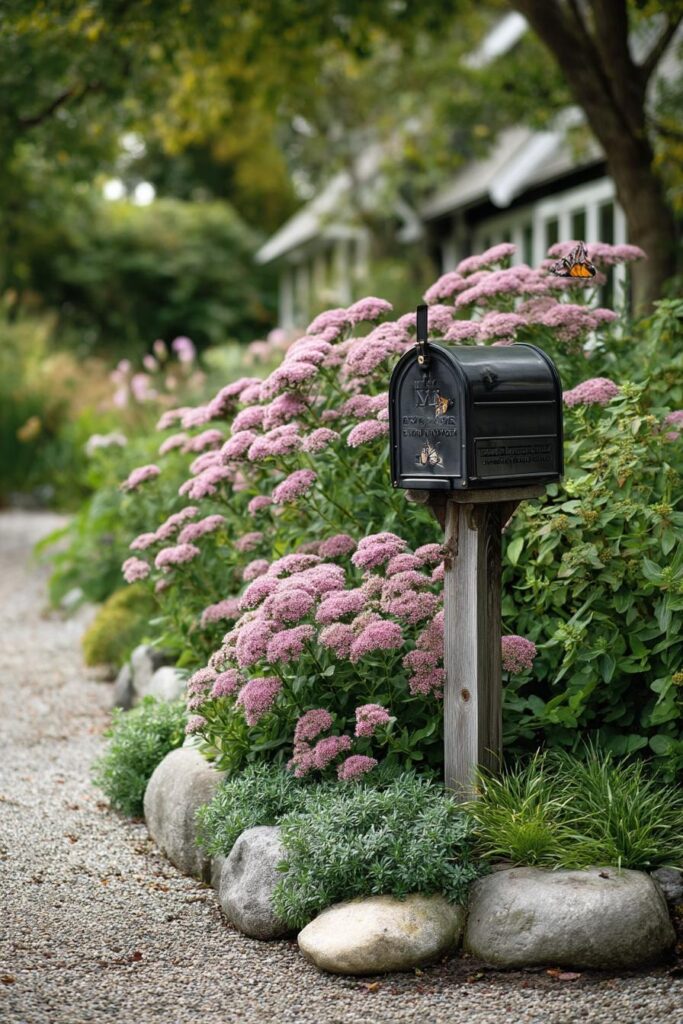
Sedum ‘Autumn Joy’ is a resilient, succulent-like perennial that brings changing color and texture to your mailbox garden from late summer into fall. Its fleshy green foliage is attractive throughout the growing season, and it produces large, broccoli-like clusters of pink flowers that deepen to coppery red as they age.
This plant is extremely drought-tolerant and thrives in full sun with well-drained soil—exactly the conditions often found near mailboxes. It’s also deer- and rabbit-resistant, which is a bonus for more rural areas. Sedum’s upright growth and tidy form make it an easy plant to incorporate into layered beds.
Use it as a mid-layer perennial, complementing taller bloomers like coneflowers or Black-Eyed Susans. The blooms last well into the fall, providing late-season color and interest, while the seed heads add texture even in winter if left uncut.
7. Coreopsis (Coreopsis spp.)
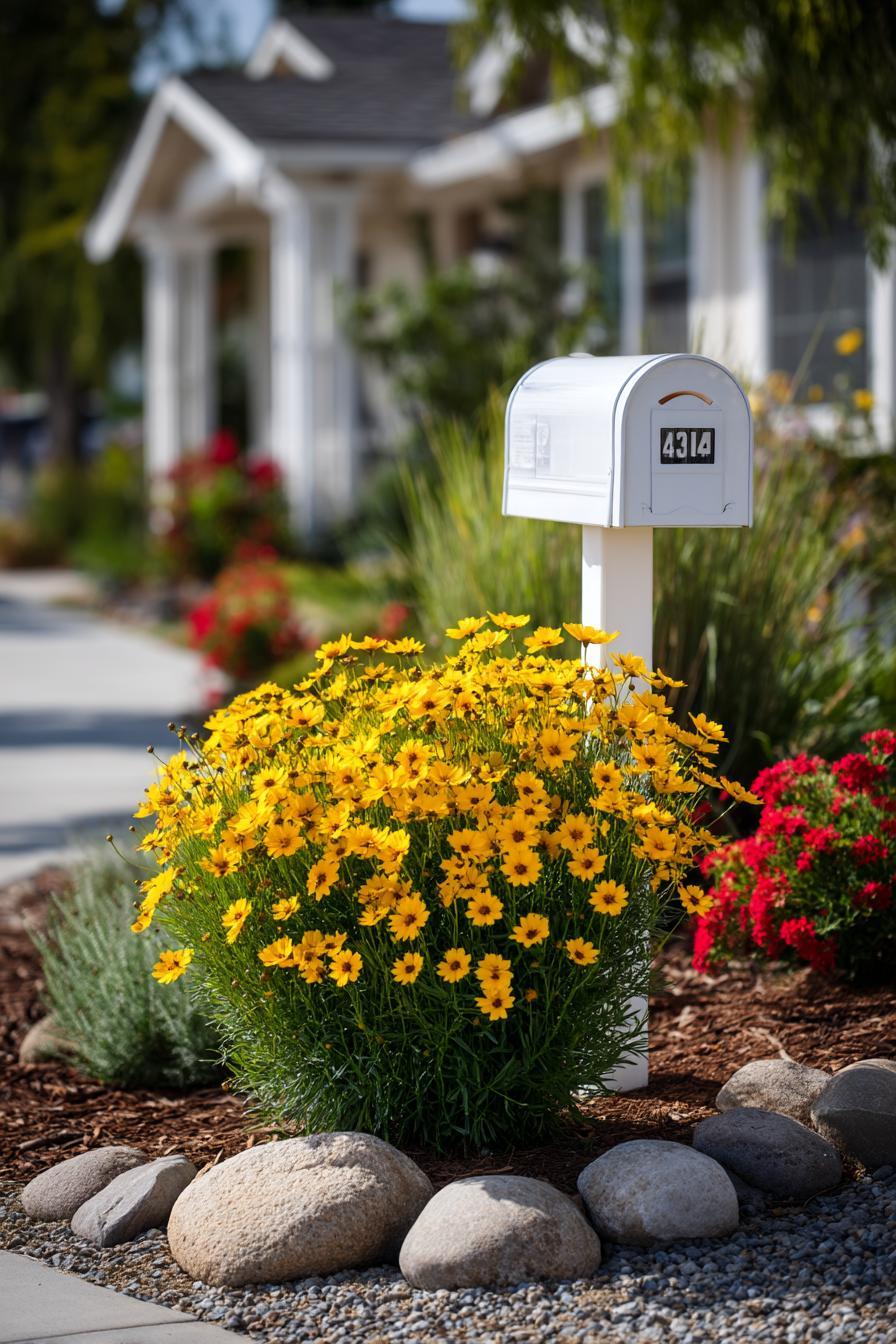
Coreopsis, also known as tickseed, is a cheerful and abundant bloomer that adds vibrant energy to any flower bed. With daisy-like flowers in shades of yellow, orange, pink, or red, this sun-loving perennial offers long-lasting color from late spring through summer and sometimes even into fall.
It’s a perfect fit for the harsh conditions around a mailbox—Coreopsis thrives in full sun, tolerates drought, and is not fussy about soil. Its compact size (usually 12 to 24 inches tall) makes it ideal for the front or middle of the flower bed, where it can act as a low border plant or a bright filler between taller blooms.
Deadheading spent flowers encourages more blooming, and many varieties self-seed, creating a natural, meadow-like effect over time. Whether used alone or mixed with other perennials, Coreopsis brings a lively, low-maintenance presence to your landscape.
8. Yarrow (Achillea millefolium)
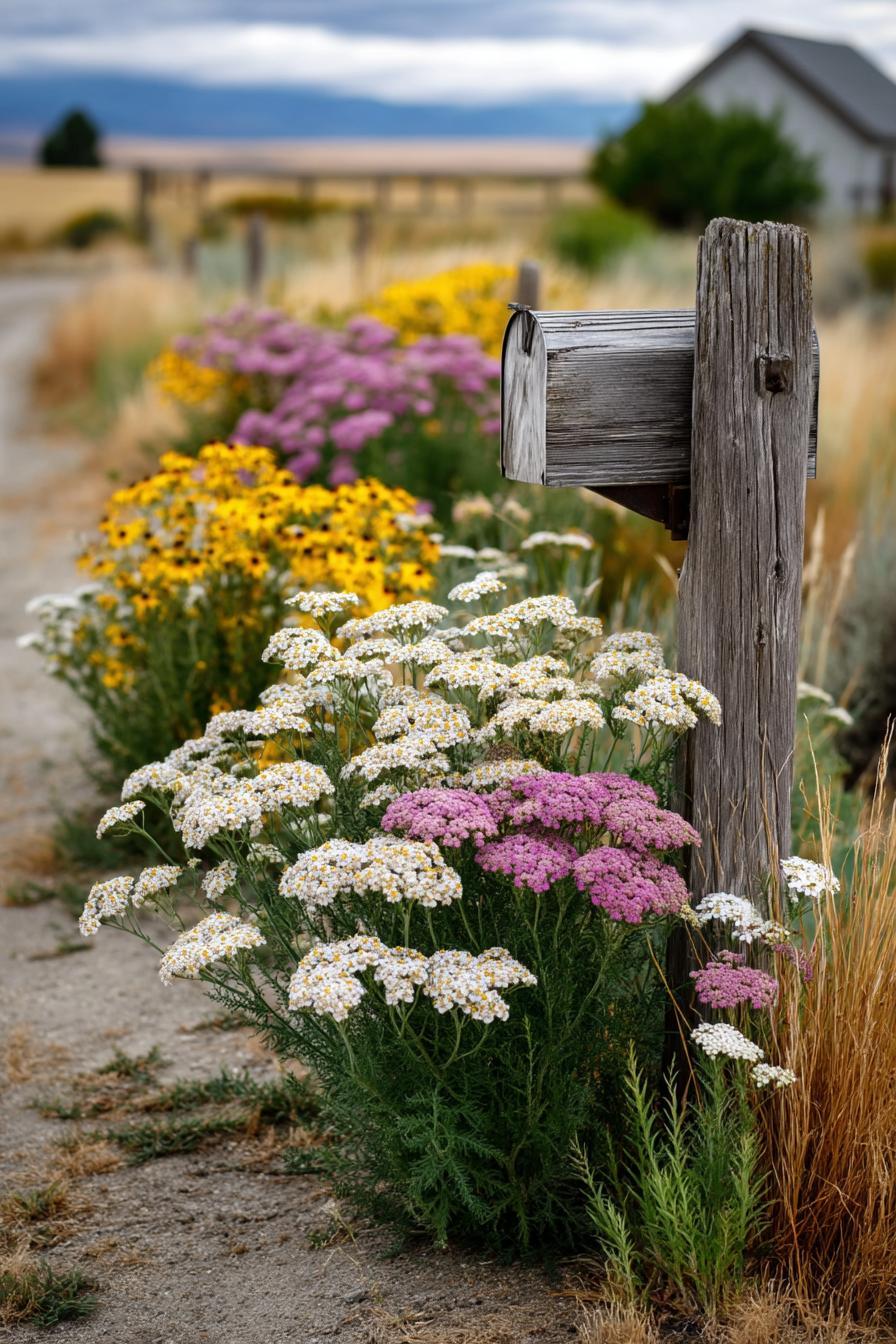
Yarrow is a tough, adaptable perennial known for its fern-like foliage and flat-topped clusters of small flowers in colors like white, yellow, pink, and red. Its fine texture and ability to thrive in poor soil and dry conditions make it an ideal plant for sunny spots around the mailbox.
Yarrow’s blooms last from early summer through fall and attract pollinators like butterflies and bees. It’s also deer-resistant and easy to grow, requiring little more than occasional watering once established. Cut it back after the first flush of flowers to encourage a second bloom cycle later in the season.
Plant yarrow as a middle layer in your design or mass it for a prairie-style look. It pairs well with other sun-loving, drought-tolerant plants like coneflower and lavender, and its soft foliage provides a great contrast to bolder blooms.
9. Lantana (Lantana camara)
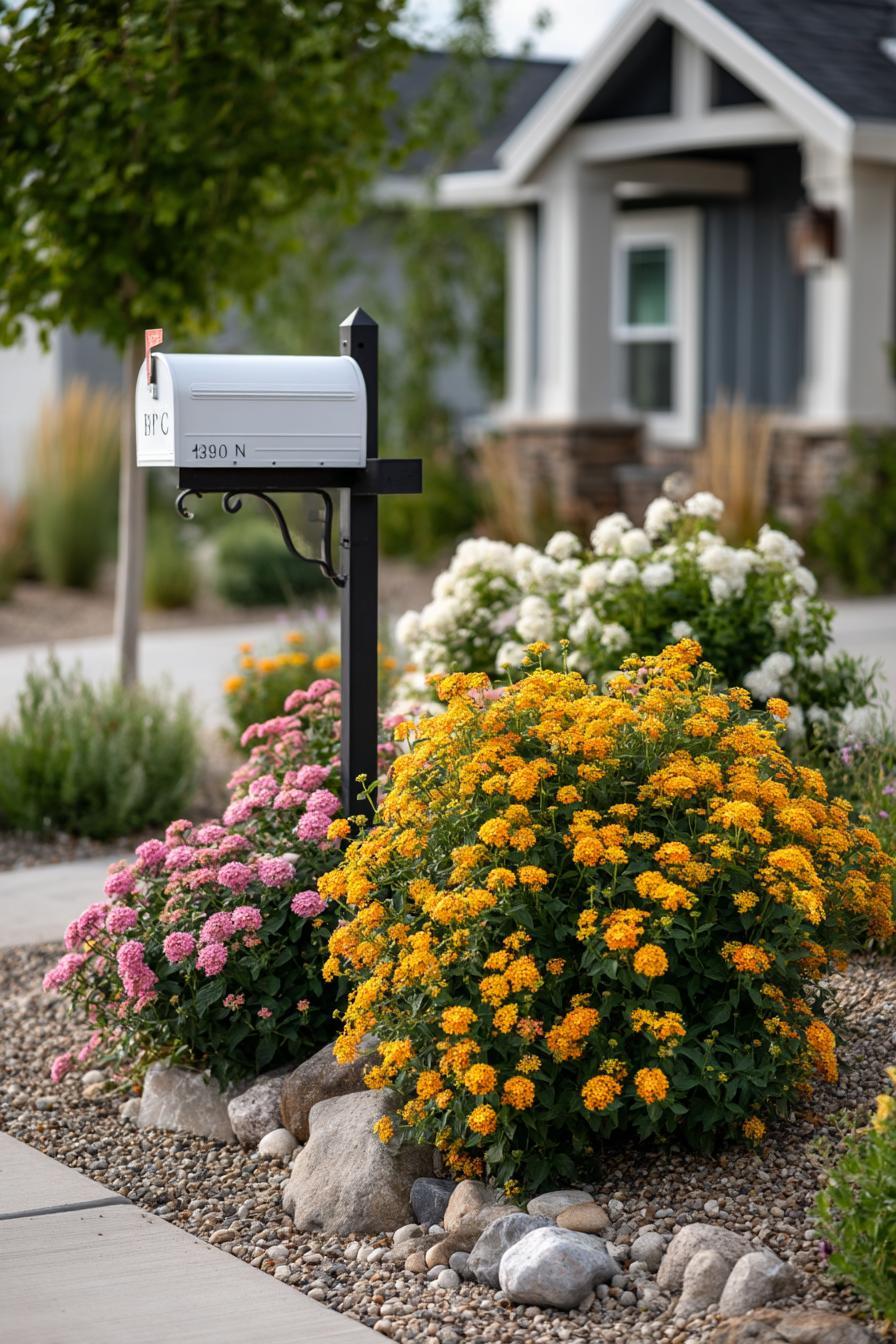
Lantana is a vibrant, heat-loving perennial (or annual in colder climates) that produces clusters of small, multicolored flowers in hues like yellow, orange, pink, and purple. It thrives in full sun and well-drained soil—ideal conditions for mailbox planting.
Not only is lantana colorful and hardy, but it also attracts butterflies and bees while being largely ignored by deer. It tolerates drought well and continues blooming throughout the hottest months of the year. The plant’s slightly trailing growth habit also makes it a good choice for softening the base of a mailbox or spilling over edges.
Trim lantana to maintain a compact shape and encourage more blooms. It’s particularly effective when planted in a mixed bed with other perennials that share similar water and light needs.
Designing a Mailbox Garden: Key Considerations
Before you plant, consider the conditions around your mailbox:
- Sunlight: Most mailbox areas receive full sun. Choose plants that thrive in 6+ hours of direct sunlight.
- Soil Drainage: Ensure the soil drains well. If it’s compacted or clay-heavy, consider amending it with compost or creating a raised bed.
- Visibility & Safety: Keep plant heights in check so they don’t obstruct mail delivery or visibility from the street.
- Spacing: Allow enough room for mature plant size to avoid overcrowding and maintenance issues.
Planning with these factors in mind ensures your perennials flourish and stay manageable throughout the seasons.
Mailbox Garden Maintenance Tips
Even low-maintenance perennials benefit from occasional care:
- Watering: Deep, infrequent watering encourages deep root growth. Most established perennials need water only during prolonged dry spells.
- Mulching: Use mulch to retain moisture, suppress weeds, and regulate soil temperature.
- Deadheading: Regularly remove spent flowers to extend blooming periods and keep beds tidy.
- Seasonal Cleanup: In late fall, cut back most perennials to a few inches above ground to prepare for winter dormancy (unless you prefer leaving seed heads for birds and winter interest).
Creative Layout Ideas for Mailbox Beds
Here are three layout tips to maximize curb appeal:
- Tiered Planting: Place the tallest plants (e.g., coneflowers, Russian sage) toward the back, medium-sized in the middle (e.g., daylilies, coreopsis), and low-growers (e.g., sedum, lantana) in front.
- Color Themes: Choose a consistent palette—such as pastels for a soft look or bold hues for dramatic impact.
- Mix of Textures: Combine fine, feathery foliage (like yarrow) with broad leaves (like daylilies) and spiky forms (like lavender) for a visually dynamic garden.
Conclusion
A thoughtfully planted mailbox garden can do more than just enhance your curb appeal—it can showcase your personal style, welcome guests, and even support pollinators like bees and butterflies. By choosing resilient, low-maintenance perennials that thrive in sun-drenched, often dry roadside conditions, you ensure your landscape remains vibrant and inviting throughout the growing season.
From the soft fragrance of lavender and the cheerful faces of Black-Eyed Susans to the architectural elegance of Russian Sage and the butterfly-attracting blooms of Lantana, each of these nine perennials offers unique beauty and function. When paired with smart design, proper planting techniques, and a touch of creativity, your mailbox can become a striking feature that elevates your entire front yard.
Whether you’re updating an existing space or starting fresh, let these ideas guide you in transforming an ordinary post into a mini garden masterpiece—one bloom at a time.
